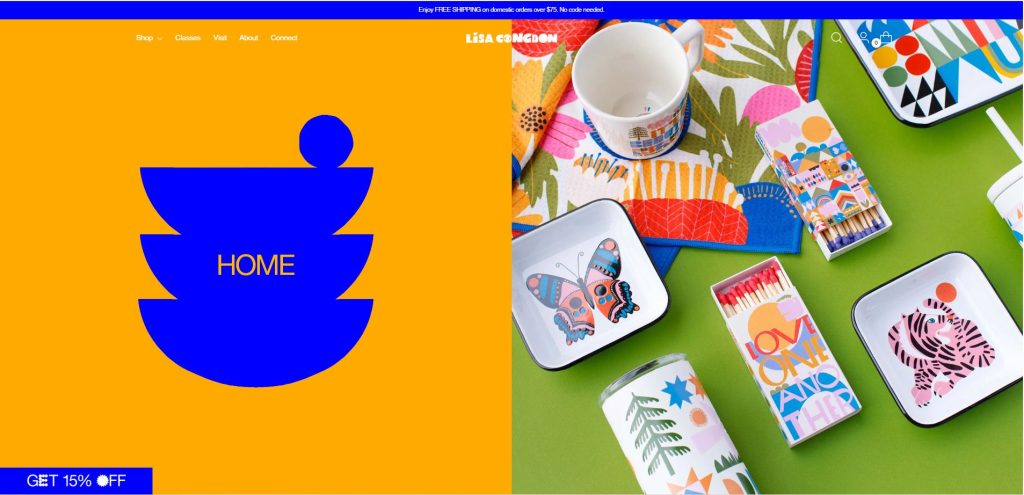Artists from every corner of the globe are using technology to create stunning visuals that can be shared and sold with just a few clicks. This shift has opened up remarkable opportunities for digital creators to reach audiences far beyond their local communities. The potential for international sales has never been greater, and it’s time for artists to seize this moment.
One of the most powerful tools at an artist’s disposal is print on demand. This innovative service allows creatives to turn their digital works into physical products without the burden of inventory or upfront costs. It connects artists directly with buyers around the world, breaking down barriers and making art accessible to everyone. With print on demand, your artwork can adorn walls in homes and offices across continents, transforming not just spaces, but lives.
As we dive deeper into this post, you will discover how to harness the global potential of your digital art. From understanding the intricacies of print on demand to exploring effective marketing strategies, we’ll equip you with the insights needed to thrive in the international market. Let’s embark on this journey together and unlock the doors to a world where your creativity knows no boundaries!
Understanding Print on Demand
Print on demand (POD) is a revolutionary service that allows artists to sell their work without the burden of inventory management or upfront costs. Essentially, when an artist uploads their digital designs to a POD platform, the service prints the artwork on various products—such as prints, canvases, and even home decor—only after a sale is made. This means that artists can offer a wide range of products without worrying about production or storage, making it an ideal solution for those looking to penetrate global markets.
One of the primary advantages of using print on demand for digital artists is the ability to reach an international audience effortlessly. With platforms such as Redbubble, Zazzle and Teespring, artists can tap into existing customer bases that span across different countries and cultures. For instance, an artist from Brazil can create vibrant, tropical-themed designs that resonate with audiences in Europe or Asia, all while leveraging the POD model to fulfill orders seamlessly. This global reach not only expands their market potential but also enhances the diversity of their customer base, allowing for richer interactions and feedback.
Another key benefit of POD services is the flexibility and scalability they offer. Artists can experiment with various designs and products without incurring significant financial risks. If a particular design doesn’t resonate with buyers, they can easily pivot and create something new based on customer feedback or trends they observe in different regions. This adaptability is crucial in today’s fast-paced digital landscape, where consumer preferences can shift rapidly. Moreover, many POD platforms provide marketing tools and analytics that help artists track sales performance and optimize their offerings for different markets.

Print on demand serves as a bridge for digital artists to connect their creativity with consumers worldwide. By removing traditional barriers to entry in the art market, POD empowers artists to focus on what they do best: creating unique pieces of art that have the potential to inspire and captivate audiences around the globe. Embracing this model not only enhances accessibility for artists but also enriches the global art community by providing diverse voices and perspectives.
The Global Market for Digital Art
In recent years, the digital art market has experienced explosive growth, with sales reaching an estimated $3 billion in 2022 and projected to surpass $4.5 billion by 2025. This surge reflects a broader acceptance of digital art forms, driven by advancements in technology, increased internet accessibility, and the rise of social media platforms that showcase artistic talent. Artists can now reach potential buyers from around the world without the limitations of geographical boundaries. For creatives looking to expand their horizons, this global marketplace presents exciting opportunities to connect with diverse audiences and generate income through their art.
Key markets showing a keen interest in digital art include North America, Europe, and Asia-Pacific. In North America, the popularity of NFTs (non-fungible tokens) has revolutionized how artists sell their work, leading to a surge in both established and emerging artists gaining recognition and financial success. Meanwhile, Europe is witnessing a growing appreciation for digital artwork as galleries and museums increasingly feature digital exhibitions, validating the medium’s significance. Asia-Pacific is another hotbed for digital art, particularly in countries like Japan and South Korea, where youth culture embraces technology and innovation in creative expression.
Marketing strategies tailored for these diverse markets are essential for artists looking to capture the attention of international buyers. For instance, leveraging social media platforms like Instagram and TikTok allows artists to showcase their portfolios while engaging with followers through interactive content. Understanding regional preferences can also inform marketing approaches; for example, artists might consider incorporating local themes or cultural motifs that resonate with specific audiences. By adopting targeted marketing strategies that highlight unique aspects of their art while considering cultural sensitivities, digital artists can effectively navigate this global landscape and broaden their customer base.
As digital art continues to gain traction worldwide, artists have the chance to tap into a vibrant and lucrative market. The key lies in understanding emerging trends and actively engaging with potential buyers across various platforms. By harnessing the power of print on demand services and implementing innovative marketing strategies, creatives can truly transcend borders and establish themselves as global players in the ever-evolving art world.
Success Stories: Artists Who Went Global
The world of digital art is rich with inspiring stories of artists who have successfully transcended geographical boundaries to reach audiences around the globe. One such artist is Lisa Congdon, known for her vibrant illustrations and hand-lettering. After initially sharing her work on social media, she harnessed the power of print on demand services to offer her designs on various products, from prints to home decor. By consistently engaging with her followers and utilizing platforms like Society6 and Redbubble, Lisa built a loyal international fanbase that appreciates her unique style. Her success underscores the importance of cultivating an online community and leveraging print on demand to turn digital creations into tangible products.

Another remarkable example is the duo behind the brand “The Paper Chase,” who specialize in whimsical digital collages. They utilized targeted marketing strategies to cater to specific demographics in different regions. By conducting research into cultural considerations, they tailored their artwork to resonate with various cultural aesthetics, ensuring their pieces appealed to diverse audiences. This approach not only broadened their market reach but also fostered connections with international buyers who felt a personal connection to their art. Their success illustrates how understanding your audience can significantly impact sales and brand loyalty.
Artist Mike Perry has made waves in the global market through his colorful and playful animations. He embraced collaborations with international brands and engaged in art exhibitions worldwide, showcasing his work across continents. By utilizing platforms like Etsy for print on demand, he effectively sold his art to customers far beyond his local market. Mike’s strategic partnerships and global exposure highlight the potential for artists to leverage multiple channels and diversify their offerings, ultimately leading to greater success in reaching international audiences.
These artists exemplify how digital creators can embrace the global marketplace by using print on demand solutions while being mindful of cultural considerations. Their stories serve as a reminder that with creativity, strategic marketing, and an understanding of diverse audiences, any digital artist can unlock the door to a world of opportunities.
Effective Marketing Strategies
Social media platforms like Instagram, Pinterest, and TikTok serve as powerful tools for showcasing your art and connecting with potential buyers. For instance, digital artist Sara B. used her Instagram account not only to post images of her vibrant digital paintings but also to share behind-the-scenes content that engaged her audience. By fostering a community around her art, she attracted followers from various countries, turning them into loyal customers. Establishing a personal brand through storytelling and consistent engagement can create a strong connection with international audiences, making them more likely to invest in your work.
Aside from social media, having a professional website acts as a centralized hub for your art portfolio and online selling efforts. It allows you to showcase your work in an organized manner and provides an opportunity to share your artistic journey and philosophy. Optimizing your website for search engines (SEO) can significantly enhance your visibility. Use relevant keywords related to your art style or themes, and ensure that each piece is well-described with alt text for images. This not only helps in attracting organic traffic but also assists in reaching potential buyers who are searching for specific types of digital art online.
Online advertising can further amplify your reach, especially when targeting international markets. Platforms like Facebook and Google Ads allow you to create targeted campaigns aimed at specific demographics, helping you connect with art enthusiasts who may be interested in your work. For example, if you create abstract digital art, you could target users who have shown interest in similar styles or related art movements. Additionally, retargeting ads can remind previous visitors about your art, encouraging them to return and make a purchase.
Lastly, consider diversifying your marketing strategies by collaborating with influencers or fellow artists who align with your brand values. Partnering with someone who has a strong following can expose your art to a broader audience and lend credibility to your work. By combining social media engagement, a well-optimized website, strategic online advertising, and collaborations, you can effectively position yourself in the global marketplace and attract international buyers eager to support your creative endeavors.
Cultural Considerations in Selling Art
What resonates with one audience may fall flat with another due to varying historical contexts, societal values, and aesthetic tastes. For instance, while minimalist designs may be highly appreciated in Scandinavian countries, vibrant, intricate patterns could appeal more to audiences in Southeast Asia. Understanding these nuances can help artists refine their offerings and create works that not only captivate but also respect the cultural identities of their viewers.
Tailoring your art and marketing strategies to resonate with diverse audiences involves more than just adjusting visuals; it requires a thoughtful approach to messaging and engagement. One artist success story highlights how a graphic designer focused on creating culturally relevant pieces for specific markets. By researching local trends and collaborating with influencers from those regions, they effectively built a connection with potential buyers. Additionally, they adapted their social media content to reflect local languages and cultural references, making their work more relatable and appealing.

Moreover, the importance of storytelling cannot be overstated. When selling art globally, sharing the narrative behind your creations can bridge cultural gaps and foster deeper connections. For example, an artist who incorporates traditional motifs from their heritage into modern digital artwork can engage audiences who appreciate both innovation and tradition. This narrative approach not only enriches the art itself but also invites international customers to connect with the artist’s personal journey and the cultural significance of the work.
Incorporating these cultural considerations into your print on demand strategy can significantly enhance your marketability. As you expand your reach to diverse audiences, remember that art is a universal language; by respecting and celebrating cultural differences, you can craft pieces that resonate on a global scale. This intentionality not only sets you apart as an artist but also fosters a sense of community among your international clientele.
Platforms for Selling Digital Art
Print on demand (POD) services have emerged as a go-to solution for many creatives looking to reach buyers around the globe without the need for upfront inventory costs. Platforms like Redbubble, Teespring, and Zazzle offer artists the opportunity to upload their designs and have them printed on various products, from prints to apparel. Each of these platforms has its unique features and audiences, making it essential for artists to choose the right one based on their goals and style.
Redbubble is particularly popular among younger audiences and is known for its vibrant community of artists. The platform allows creators to set their own prices, giving them control over their profit margins. However, while this flexibility is appealing, it can also lead to price wars among artists, potentially driving profits down. On the flip side, Society6 is celebrated for its high quality art prints and home decor items. The platform curates collections that resonate well with design-conscious consumers, which can be advantageous for artists whose work aligns with current trends. Yet, Society6 does take a larger commission from sales, which may deter some artists looking to maximize their earnings.
Zazzle stands out with its customizable products, allowing customers to personalize items with the artist’s designs. This interactive element can appeal to international audiences seeking unique, tailored gifts. However, Zazzle’s interface can be somewhat overwhelming for new users, as it offers a vast array of product options and customization features that may require a learning curve. Artists may need to invest time in understanding how to navigate the platform effectively to take full advantage of its offerings.
The choice of platform will depend on an artist’s specific needs and target audience. It’s vital for digital artists to research each option thoroughly, considering factors such as ease of use, commission structures, and product offerings. By aligning their creative vision with the right platform, artists can successfully tap into global markets and showcase their work to a diverse range of buyers eager to connect with unique digital art.
Shipping and Logistics for International Sales
When it comes to selling digital art globally, shipping and logistics are critical components that can make or break your success. While print on demand services have simplified the fulfillment process for artists, understanding the intricacies of shipping art products overseas is essential. Factors such as customs regulations, shipping times, and costs can vary significantly from one country to another, so being informed is key. For instance, if you’re using an e-commerce platform like Etsy or Redbubble, they often provide integrated shipping solutions, but it’s still important to familiarize yourself with international shipping policies to avoid unexpected delays or fees.
Managing costs effectively is another crucial aspect of international shipping. Many artists find that offering free shipping can boost sales, but this requires careful consideration of how to absorb those costs. One strategy is to build the shipping fees into your product pricing. For example, if a print on demand service charges $10 for international shipping, you might increase your artwork price by a few dollars to cover this expense. Additionally, choosing a reliable print on demand partner who offers competitive shipping rates can significantly reduce overhead. Services like Printful or Gooten not only handle printing but also offer various shipping options that can help you strike a balance between affordability and delivery speed.
Delivery times are equally important when selling internationally. Customers expect their orders to arrive promptly, and long wait times can lead to dissatisfaction and even negative reviews. To mitigate this, consider offering multiple shipping options at checkout—such as standard and expedited services—so buyers can choose what suits them best. Communicating estimated delivery times clearly on your e-commerce platform can set realistic expectations and enhance customer trust. Moreover, tracking capabilities provided by many print on demand services can keep your customers informed about their order status, which further enhances their shopping experience.
While the logistics of shipping art products internationally may seem daunting, a proactive approach can turn these challenges into opportunities. By leveraging print on demand services and understanding the nuances of international shipping, you can effectively manage costs and delivery times, ultimately leading to satisfied customers and a successful global presence for your digital art.
Overcoming Challenges in Global Sales
Selling digital art globally presents a unique set of challenges that can deter even the most passionate creative entrepreneurs. One of the most common obstacles is navigating the complexities of international regulations and taxes, which can vary significantly from one country to another. Artists may find themselves perplexed by the need to understand customs duties, VAT, and other tax implications, which can eat into their profits if not managed properly. Moreover, language barriers can complicate communication with buyers or partners in different regions, potentially leading to misunderstandings that could harm sales or customer satisfaction.
To overcome these hurdles, artists can leverage various resources and tools designed to simplify the process. Utilizing e-commerce platforms that provide integrated solutions for international sales is a great start. For instance, platforms like Etsy or Redbubble often handle currency conversion and tax calculations automatically, allowing artists to focus more on their creative work rather than administrative tasks. Additionally, engaging with local communities through social media groups or forums dedicated to creative entrepreneurship can provide invaluable insights and support from peers who have successfully navigated similar challenges.
Another significant challenge faced by digital artists is effectively marketing their work in diverse cultural contexts. What resonates with one audience may not appeal to another, making it essential for artists to conduct thorough research on their target markets. This could involve analyzing trends in different regions or even collaborating with local influencers who understand the preferences of their audiences. Tailoring marketing strategies—such as adjusting visual elements or promotional messages—can help bridge cultural divides and make an artist’s work more relatable to international buyers.
Finally, embracing technology can also alleviate many of the logistical challenges associated with global sales. Tools like automated email marketing systems and analytics platforms can help artists track customer behavior and optimize their outreach efforts. By staying informed about global trends and utilizing available resources, digital artists can not only overcome obstacles but also thrive in the expansive world of international art sales. Ultimately, the key lies in adaptability and continuous learning, ensuring that artists remain resilient in the ever-evolving landscape of creative entrepreneurship.
Embracing a Global Future
The digital art landscape is rich with opportunity. Artists can now connect with buyers from all corners of the globe. The potential for growth and creativity is limitless. By leveraging print on demand services, you can turn your passion into profit while reaching international audiences.
Don’t hesitate to take that leap. Embrace the tools and platforms available to you. With dedication and the right strategies, your art can transcend borders. Start exploring the global market today, and watch your creativity flourish like never before!

